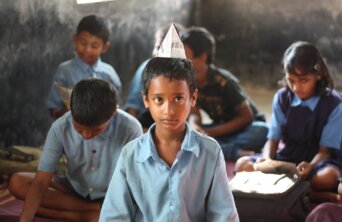- About
- Topics
- Picks
- Audio
- Story
- In-Depth
- Opinion
- News
- Donate
- Signup for our newsletterOur Editors' Best Picks.Send
Read, Debate: Engage.
| topic: | Child rights |
|---|---|
| located: | India |
| editor: | Hanan Zaffar |
At an air cooler facility in New Delhi, 15-year-old Alok was reportedly trapped in an elevator shaft and crushed to death. Police claim that Alok was forced to work as a lift supervisor in the plant where his mother is also employed as a labourer.
Even though child labour is illegal in India and the Indian government has categorised many jobs as hazardous for children, many states in the country are showing drastic increases in child employement. A survey conducted by Campaign Against Child Labour (CACL) indicated that in 2021 child labour had increased by 180 percent compared to 2020 in the south Indian state of Tamil Nadu.
The Child Labour Amendment (Prohibition and Regulation) Act of 2016, which governs child employment, forbids child labour for anyone under the age of 14, with the exception of child performers and employees of family businesses. But the law is severely violated throughout the country.
According to the estimates by International Labour Organisation (ILO), there are about 10.1 million working children between the age of 5 to 14 in India. Since these estimates are made using the 2011 census, the last to be taken in the country, the number can be higher today.
While the economic development undergone by India in the last few decades can hardly be ignored, neither can the poverty still prevalent in the country. The main and most prominent reason behind children being forced into work and away from education is poverty. For many poor families in India who are struggling to meet their basic needs, seeking employment for their children is a means to more income.
With roots in poverty, the problem of child labour only worsens when coupled with illiteracy, lack of access to decent jobs, lack of awareness and other related factors. These families are often stuck in a vicious cycle where survival is the basic priority.
Many state governments in India have been trying to combat this problem and have curtailed it to a great extent. Incidents of child labour have decreased by almost 2.6 million from 2001 to 2011, and the decreasing trend has continued through the last decade in several states. Statistics of child labour in Indian states indicate that the conditions are improving in states focusing on primary education. Literacy and general awareness of the importance of education are an important social factor in combating the problem of child labour.
Having said that, there are a large number of children still working in risky factory conditions doing menial jobs. According to International Labour Organization the decline of child labour in India was more visible in rural areas, while the rate has increased in urban areas where they are sought to work menial jobs.
The Indian government must continue to crackdown on employers that take advantage of child labourers and ignore the law while, at the same time, improve education in the country to break these cycles of poverty.
Image by Jaikishan Patel

